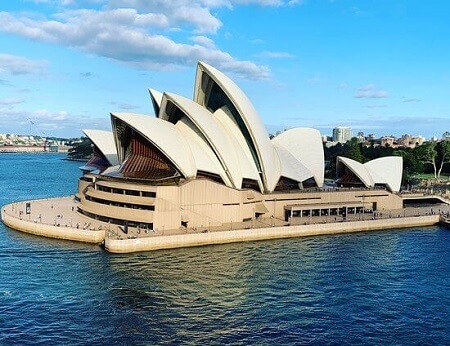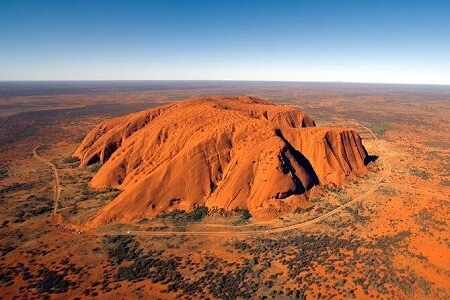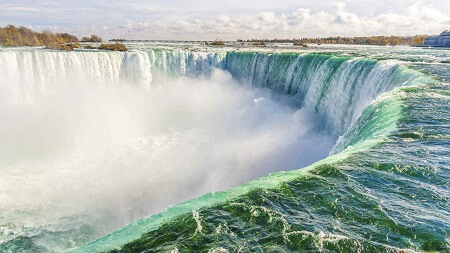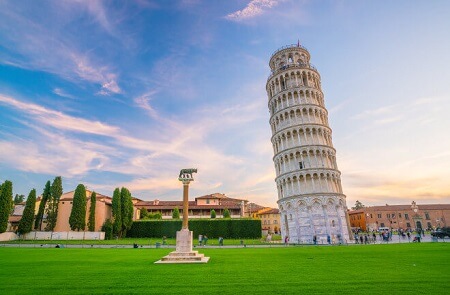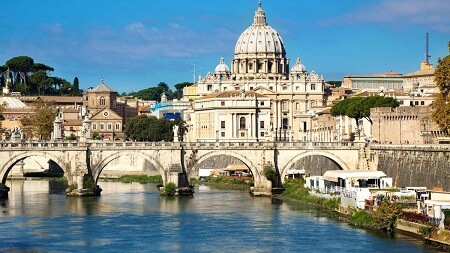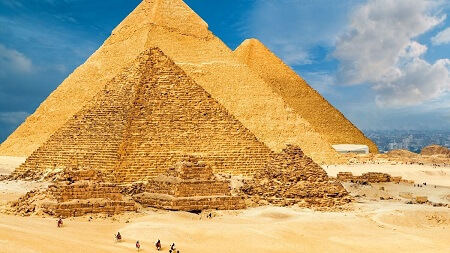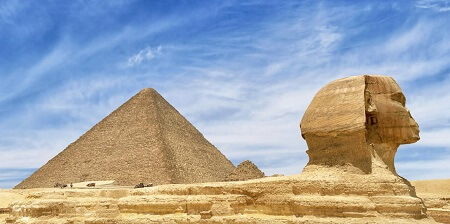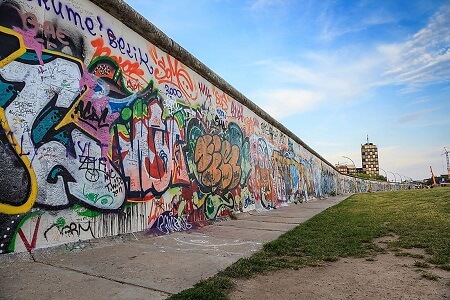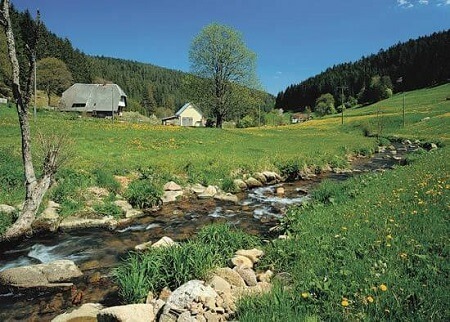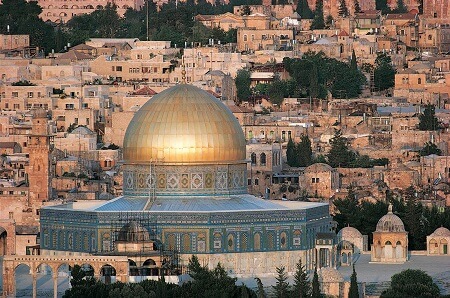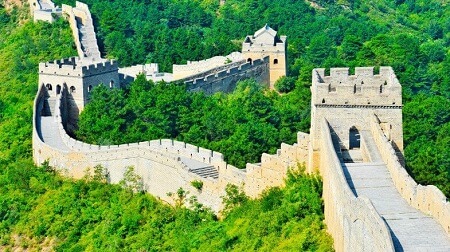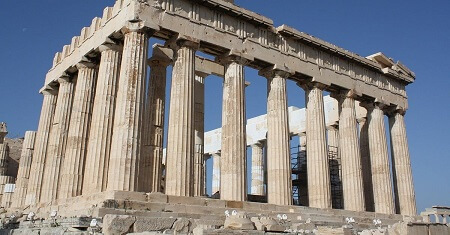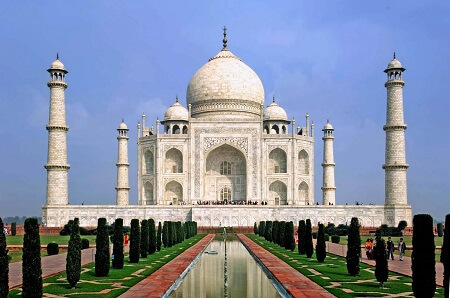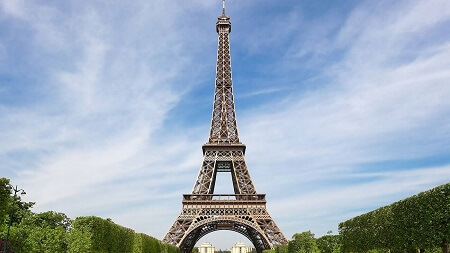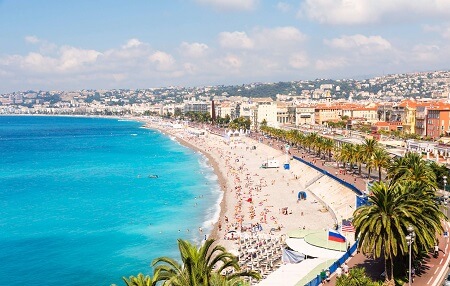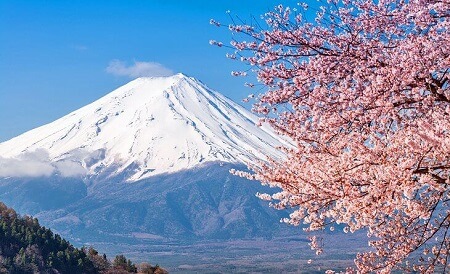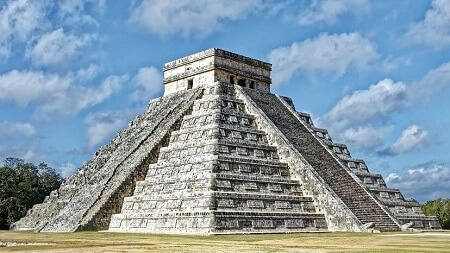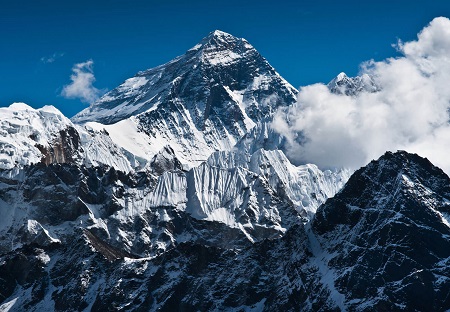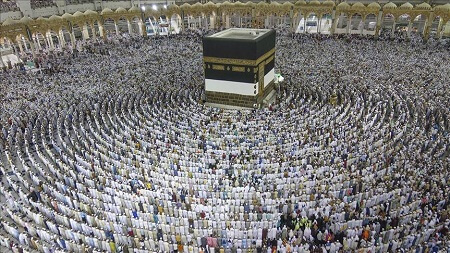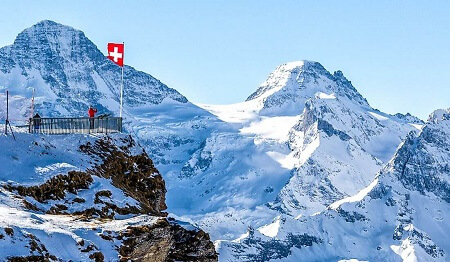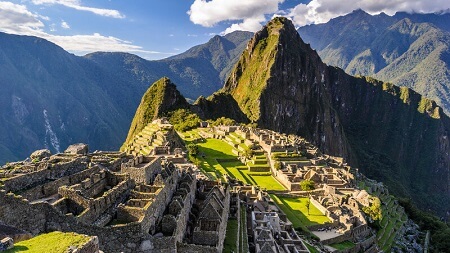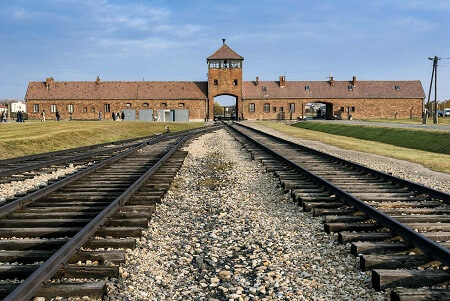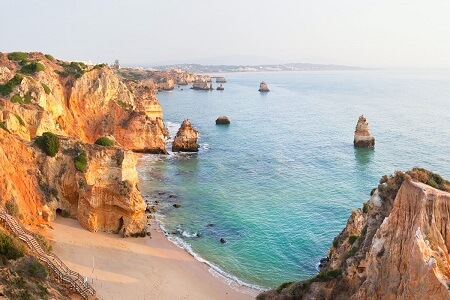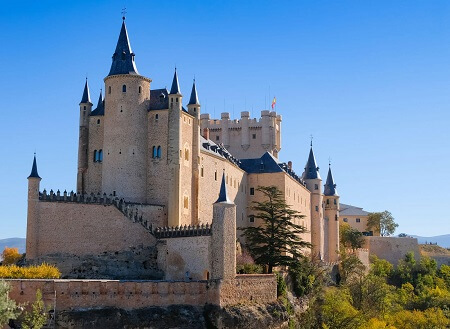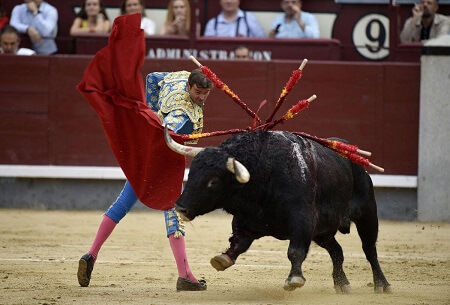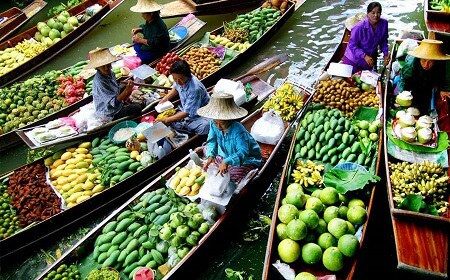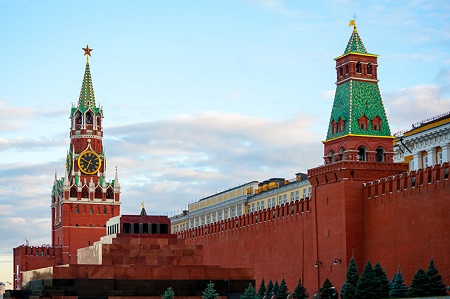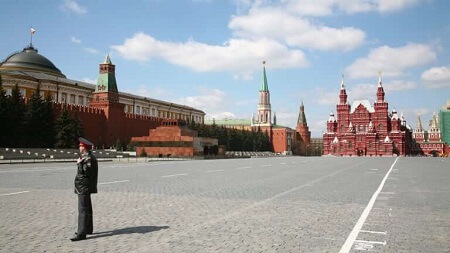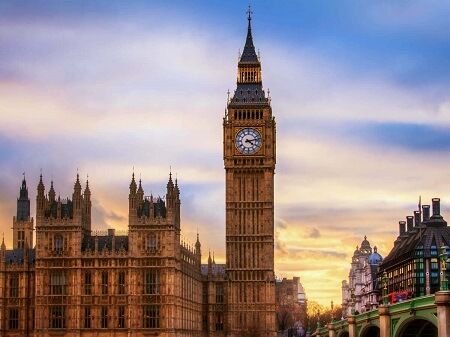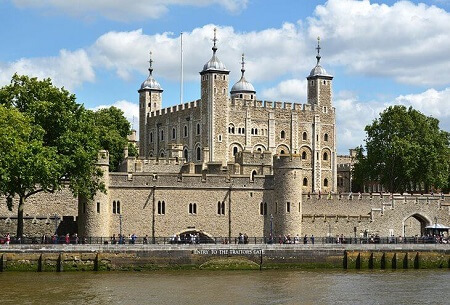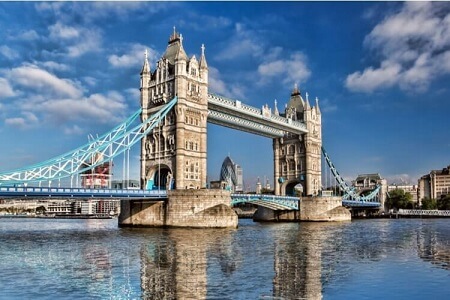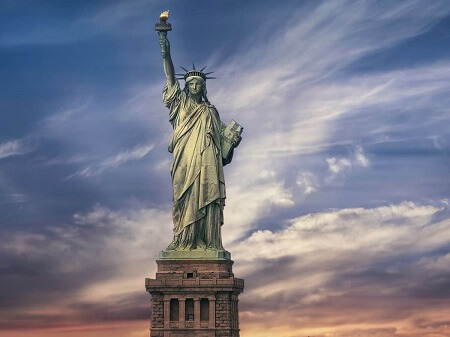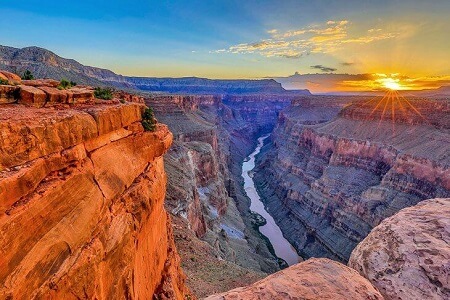ElimuZA Access to Education
Tourism Icons Grade 12 - Tourism Grade 12 Study Guide
Share via Whatsapp Join our WhatsApp Group Join our Telegram GroupTourist Attractions
The difference between a tourist attraction and an icon
- A tourist attraction is a place, an area, a building or an event of interest that tourists visit for its historical significance, cultural value, natural or human-made beauty or entertainment opportunities e.g. natural attractions (waterfalls, mountains, forests and wildlife) and human-made attractions (theme parks, festivals, historical buildings and statues).
- An icon in the tourism context is an attraction or feature that is world famous, has symbolic value and is closely associated with a particular destination.
Reasons why specific tourism attractions and/or physical features are regarded as icons
- Unique architectural or construction features e.g. the Taj Mahal in India
- Unique and remarkable natural features e.g. the Grand Canyon in Arizona
- Religious significance e.g. Mecca in Saudi Arabia
- A distinctive and impressive size or shape e.g. Mount Everest in Nepal
- A sense of magic and mystery e.g. Machu Picchu in Peru
- A symbol of extraordinary human achievement e.g. the Great Pyramids in Egypt
- Attract a certain number of visitors each year
The economic significance of icons for a country/area
Some of the factors that contribute to the economic significance of icons are that they:
- earn valuable foreign exchange from the visitors attracted to the site
- provide the government with extra revenue through taxes, such as airport tax and sales tax so that it has more money to spend on its own needs
- create local jobs and business opportunities
- have a multiplier effect – new money is brought into the economy
- lead to improved infrastructure that will benefit the entire country, not just the tourist industry
- lead to increased regional development particularly in isolated areas
41 FAMOUS TOURISM ICONS AND ATTRACTIONS
Sydney Opera House - Sydney, Australia

- It is universally recognised as an architectural masterpiece of the 20th century because of its design and construction.
- It is located in Sydney Harbour, close to the Sydney Harbour Bridge.
- It’s creative roof design of interlocking “shells” are shaped like sails of a sailboat
- It is one of the most famous performing arts centres in the world
- The building houses five theatres, a recording studio, cafés, restaurants, bars and souvenir shops.
Ayers Rock / Uluru-Kata Tjuta National Park - Northern Territory, Australia

- Uluru or Ayers Rock is a unique, massive, round rock formation composed of hard, red sandstone. It also known as an “island mountain” and two-thirds of the rock is buried 5 km underground.
- Ayers Rock or Uluru lies in the Uluru-Kata Tjuta National Park in the Northern Territory of Australia.
- The park is named after Uluru, a single rock dome and Kata Tjuta, a range of rock domes.
- Formed through erosion over 500 million years, it is the most spectacular natural landmark in Australia.
- The area is a spiritually sacred, ancestral place for the Aborigines, and they consider it disrespectful if visitors climb Uluru.
The statue of Christ the Redeemer - Rio de Janeiro, Brazil

- With its outstretched arms overlooking the city of Rio de Janeiro it is one of the most famous statues in the world and is known not only for its dramatic location and size, but also as a symbol of Christianity and peace.
- The statue of Christ the Redeemer is situated on top of Corcovado Mountain
- At a height of 700 m it overlooks the city of Rio de Janeiro.
- It was built to commemorate the 100th anniversary of Brazil’s independence from Portugal in 1922
- It offers spectacular views of the city, Sugar Loaf Mountain, the Maracana Soccer Stadium and the famous beaches of Copacabana and Ipanema
Niagara Falls - Niagara Falls, Ontario (Canada) and Niagara Falls, New York (USA), Canada and USA

- The Niagara Falls is the most famous waterfall in the world. It is one of the biggest and most powerful and receives more visitors than any other waterfall.
- Niagara Falls on the Niagara River is located on the international border between the province of Ontario, Canada and the state of New York, USA.
- The Niagara Falls is made up of three falls: the Horseshoe Falls on the Canadian side, the American Falls and the smaller Bridal Veil Falls on the USA side.
- Combined, these three falls have the highest flow rate of any waterfall in the world and is one of the most powerful on earth.
- The Niagara River is used as a source of hydroelectric power
Colosseum - Rome, Italy

- The Colosseum is the largest amphitheatre constructed during the Roman Empire and is regarded as the greatest example of Roman engineering and architecture. It is nearly 2 000 years old.
- Construction of the Colosseum was started between 70 AD and 72 AD
- It was originally known as the Flavian Amphitheatre
- The Colosseum, which could seat over 50 000 people, was built to provide a place of entertainment for the Roman citizens and to display the strength of the Roman Empire.
- The amphitheatre was used to stage fights with wild animal, tortures and executions of prisoners, slaves and Christians and fights between gladiators
Leaning Tower of Pisa (Piazza del Duomo) - Pisa, Italy

- Because of its beauty and the fact that it has tilted, this freestanding bell tower or campanile, known as the Leaning Tower of Pisa, is one of the most recognisable structures in the world.
- The tower or campanile is one of three historic buildings located on the Piazza del Duomo (Cathedral Square), a grassy area in the city of Pisa, Italy.
- Construction of the eight-storey, white marble tower started in 1173 and was only completed around 1350.
- Unstable soil and a weak foundation caused the tower to sink and tilt soon after the third story was built
- It creates the impression that it is defying gravity by not falling over
Venice - Venice, Italy

- Venice, a city built on 118 small islands linked by canals and bridges is one of the most beautiful cities in the world and famous for its architecture and art.
- The city of Venice is located in a lagoon on the shore of the northern Adriatic Sea.
- The city, founded in the 5th century, was built on wooden platforms anchored into small islands.
- Venice is also known as the Queen of the Adriatic, City of Canals, The Floating City, City of Romance and City of Bridges.
- A network of interconnecting narrow streets, canals, bridges, piazzas or squares, palaces, churches, monuments and art galleries attract millions of tourists each year.
- Cars are banned. Water buses, water taxis and gondolas provide transport.
- Flooding is always a serious threat and parts of the city are already sinking.
Vatican City - Rome, Italy

- Vatican City, also known as the Vatican, is the world’s smallest independent city state, the seat of the Roman Catholic Church and is ruled by its head, the pope.
- The Vatican City was established in 1929 and is completely surrounded by the city of Rome.
- The Swiss Guard serves as the pope’s bodyguards.
- The most famous landmarks in the Vatican are:
- St Peter’s Basilica: The largest church and dome in the world. It dates back to the 15th century and contains artworks by world-famous artists.
- St Peter’s Square: Every Easter Sunday 400 000 people fill this, the largest square in Rome, to hear the pope’s Easter message.
- The Vatican Museum: The world’s largest museum and contains some of the most famous artworks in the world.
The Great Pyramids of Giza - Giza, Egypt

- The Pyramids of Giza were constructed over 4 500 years ago as massive tombs for the Egyptian pharaohs. The pyramids are symbols of Egypt’s history and culture. They serve as evidence of the ancient Egyptians’ technical advancement. This group of pyramids at Giza is the only wonder of the ancient world that still exists.
- There are nearly 100 pyramids in Egypt. The three most famous pyramids are located near the Nile River in the city of Giza, 25 km from central Cairo.
- The three pyramids are:
- the Pyramid of Khufu (also known as the Great Pyramid or the Pyramid of Cheops)
- the Pyramid of Khafre
- the Pyramid of Menkaure
- The Pharaohs built these massive tombs with chambers, tunnels, secret passages and storerooms to hold and protect mummies, personal belongings and supplies for the afterlife.
- They believed that the souls of the dead would join the sun god, Ra, by ascending through the pointed structure of the pyramid.
The Sphinx - Giza, Egypt

- The Sphinx is a huge statue of a creature with the body of a lion and the head of a human. It is carved out of a single block of limestone and is one of the largest and most recognisable statues in the world, and a symbol of Egypt.
- The Sphinx is located in front of the Great Pyramid at Giza, 25 km from Cairo.
- Its exact construction date and purpose is not known, but it is believed that the Sphinx was built by the Pharaoh, Khafre, around 2 530 BC to guard his tomb.
- The Sphinx was covered by sand up to its chin for many centuries and was only fully exposed in 1925.
- Over the years, sand, wind, pollution and vandalism have caused a great deal of damage to the statue.
Berlin Wall - Berlin, Germany

- Built in 1961, the Berlin Wall was a concrete wall separating West Berlin from East Berlin in East Germany. It symbolised the division between democracy and communism during the Cold War.
- In 1945, World War II came to an end with the defeat of Hitler’s Nazi Germany.
- Germany and the city of Berlin was divided into four allied (USA, Britain, France and the USSR) occupation zones.
- The zones of the USA, Britain and France were united in 1949 to form democratic West Germany, while the USSR-occupied zone became communist East Germany.
- Germany’s former capital, Berlin in East Germany, was divided into East and West Berlin. West Berlin was a democratic city surrounded by communist East Germany. Between 1949 and 1960 nearly three million East Germans escaped to the more prosperous West Berlin.
- In 1961, the East German government began constructing a wall complete with watchtowers and checkpoints such as Checkpoint Charlie, to prevent people from crossing to the West.
- After continued demonstrations by East Germans the Berlin Wall was finally broken down in 1989.
Black Forest - BadenWürttemberg, Germany

- The Black Forest is known for its beautiful scenery consisting of mountains covered with pine and fir trees, valleys, lakes, mineral springs and picturesque villages.
- The region is 200 km long and 60 km wide and lies in the state of Baden-Württemberg in south-western Germany on the border with France and Switzerland.
- Famous for its handcrafted cuckoo clocks, Black Forest cake and cherry schnapps it is Germany’s most popular tourist region.
- Visitors can also enjoy activities such as hiking, walking, mountain biking and skiing.
The Dome of the Rock - Jerusalem, Israel

- The Dome of the Rock is an Islamic shrine built on a sacred rock. It is the third most holy site in the world for Muslims after Mecca and Medina. The Prophet Muhammad, the founder of Islam, is believed to have ascended to heaven from this site.
- The Dome of the Rock, located on the Temple Mount, is the oldest Islamic monument in the world. It was completed in 691 AD and can be seen from all corners of Jerusalem.
- The octagonal structure is decorated with mosaics, marble, metalwork and coloured glass. The dome was originally made of gold but has been replaced with an aluminium dome covered with gold leaf.
- The stone on which the Dome of the Rock is built is also sacred to Jews, since they believe it is the Foundation Stone of the world. Jews also believe it to be the place where Abraham prepared to sacrifice his son, Isaac, and that it is where the Temple of Solomon, built in 950 BC, stood.
The Wailing Wall - Jerusalem, Israel

- The Wailing Wall, located on the west of the Temple Mount in the old city of Jerusalem, is the holiest Jewish site in the world.
- Also known as the Western Wall or Kotel (Hebrew), this 2 000-year-old wall is all that remains of a retaining wall that surrounded the Second Temple built by Herod the Great on the Temple Mount and that was destroyed by the Romans in 70 AD.
- This site has become a place of prayer and pilgrimage for Jews from all over the world and it is where they mourn the loss of their temple and pray for its restoration.
- Facing the Wailing Wall is the Western Wall Plaza, an open-air synagogue divided into two sections for men and women to pray separately. Ultraorthodox (Hasidic) Jews visit the wall to read the Torah and pray, while chanting and swaying.
- Those who pray at the wall write their prayers on a piece of paper and insert it in the cracks in the wall
The Great Wall of China - Beijing, China

- The Great Wall of China dates back 2 000 years and is the world’s longest humanmade defensive structure. It is not only a symbol of China’s history and culture but it is testament to ancient Chinese determination and engineering skills.
- The Great Wall was built between the 5th century BC and the 16th century AD by several Chinese emperors to protect China against invaders.
- Most of the Great Wall that still exists today was built during the Ming dynasty (between 1368 and 1644).
- It stretches over 8 850 km from east to west across northern China, crossing mountains, desserts and grasslands.
- Watchtowers were built on the wall at regular intervals to serve as lookouts and store military supplies.
- Messages could be sent over long distances along the wall by using flag, fire and smoke signals.
- Thousands of soldiers, prisoners and peasants were used to build the wall. It is believed that over one million people died during its construction, hence the nickname “the longest cemetery on earth”.
The Parthenon - Athens, Greece

- The Parthenon is the remains of a 2 500-year-old temple located on the Acropolis, a hill overlooking the city of Athens, Greece. It is a symbol of ancient Greek civilisation and its most famous surviving building.
- The temple was built in honour of the Greek goddess, Athena, the patron of Athens, for protecting Athens during war.
- Construction on the temple continued from 447 BC until 438 BC.
- The many marble sculptures decorating the Parthenon were completed in 423 BC and include a huge statue of Athena.
- During its lifetime the temple served as a treasury, fortress, church and mosque.
- In 1687, a huge explosion caused in a battle severely damaged the Parthenon.
The Taj Mahal - Agra, India

- The Taj Mahal iis constructed of white marble. It was built by an Indian ruler as a symbol of his everlasting love for his deceased wife. The Taj Mahal is regarded as an architectural masterpiece and one of the most beautiful buildings in the world.
- Shah Jahan, the Mughal Emperor of Southern Asia, ordered the construction of the Taj Mahal in 1631 to honour the memory of his favourite wife, Mumtaz Mahal, who died while giving birth to their 14th child.
- The Taj Mahal is situated on the banks of the Yamuna River and surrounded by a vast garden, and its construction took 20 000 workers 22 years to complete.
- The octagonal monument was built entirely from white marble and decorated with semi-precious and precious stones.
- Inside the Taj Mahal visitors can see the memorials to Mumtaz Muhal and Shah Jahan who died in 1666. They are entombed in a crypt below the centre chamber which is not open to the public.
The Blue Mosque - Istanbul, Turkey

- The Blue Mosque in Istanbul, Turkey, with its cascading domes, decorated with ceramic blue tiles on the inside, its courtyards and six minarets, is considered one of the most beautiful mosques in the world.
- The Blue Mosque was built by Sultan Ahmed I between 1609 and 1616. Its official name is the Sultan Ahmet Mosque.
- The 34 m-high main dome is surrounded by eight smaller cascading domes and semi-domes. The spectacular interior is decorated with more than 20 000 handmade blue ceramic tiles; hence its popular name Blue Mosque.
- Altogether 260 stained-glass windows and a massive chandelier flood the interior with light and enhance the blue colour of the tiles.
- The Blue Mosque is the only mosque in Turkey that was originally built with six minarets. Muslims are called to prayer five times a day from their balconies
The Eiffel Tower - Paris, France

- The Eiffel Tower is the world’s most famous tower and a symbol of Paris. It is the tallest structure in Paris and the most-visited tourist attraction in the world that charges an admission fee.
- The Eiffel Tower is made from iron lattice and is situated on the southern bank of the Seine River in Paris, France.
- It was built by the French structural engineer Gustave Eiffel as an archway to the International Exhibition of Paris in 1889 and to celebrate the 100th anniversary of the French Revolution.
- It took two years, two months and five days to build. The Eiffel Tower was intended to be dismantled in 1909 but was saved when it was decided to use it as a telecommunications tower.
- Also known as The Iron Lady, the Eiffel Tower has a height of 324 m if you include its 120 antennas.
- There are three levels, giving it’s annual seven million visitors spectacular views of Paris.
- The first two levels are accessible by stairs or lifts and house souvenir shops and restaurants.
- The third level can only be reached with a lift
The French Riviera - Nice, France

- The French Riviera or Côte d’Azur is one of the most famous and luxurious coastal resort areas in the world. It lies on the Mediterranean coast of south-eastern France on the border with Italy
- The French Riviera is known for its blue water, scenic beauty, dramatic coastline, warm weather and beaches.
- The world-famous cities of Nice (the capital), Cannes, Monte Carlo (in Monaco) and Saint-Tropez are all on the French Riviera with their luxury hotels, casinos, restaurants and yachts.
- This playground of the rich and famous is often visited by celebrities such as film stars, supermodels, billionaires and royalty.
- Annual events such as the Cannes Film Festival and the Formula One Grand Prix in Monaco attract large crowds.
- The popular tourist town of Grasse is known as the perfume capital of the world.
Mount Fuji - Tokyo, Japan

- Mount Fuji is the highest mountain in Japan. This volcanic mountain is world famous for its near perfect symmetrical cone shape and is recognised as a symbol of Japan.
- Mount Fuji is surrounded by five beautiful lakes and is in the Fuji-Hakone-Izu National Park approximately 100 km south-west of Tokyo, the Japanese capital.
- The volcano last erupted in 1707 but although it has been dormant since then, geologists still regard it as active.
- Mount Fuji is 3 776 m high and the crater has eight peaks.
- For most of the year, the mountain is fully covered by snow. During summer and early autumn its beautiful snow cap serves as inspiration to artists, poets and photographers.
- Japanese Buddhists see climbing the mountain as an important pilgrimage because it is sacred to them.
- The official climbing season is in July and August, when there is no snow on the mountain.
Chichen Itza - Yucatán Peninsula, Mexico

- Chichen Itza is the ruined remains of a large, ancient Mayan city. It is one of the best preserved archaeological sites of the ancient Mayan civilization.
- Chichen Itza lies on the Yucatán Peninsula in Mexico.
- With its stone temples, pyramids, astronomy observatory and ball courts Chichen Itza was a powerful Mayan political, spiritual, ceremonial and trading centre between 500 AD and 1100 AD. The city was later abandoned and visited by Mayan pilgrims only until the Spanish arrived in the 16th century.
- The mixture of architectural styles at the site provides insight into Mayan culture, art, religion, knowledge of mathematics and astronomy as well as their practice of human sacrifice to the gods.
- The most important building at Chichen Itza is a stepped pyramid known as the Temple of Kukulcán or El Castillo (the castle). It was used for religious and astronomical purposes.
Petra - Wadi Musa, Jordan

- This desert city, hidden in a narrow valley between mountains, has been carved from solid rock, making it one of the most spectacular ancient cities in the world. Petra, which means “rock” in Greek, was constructed around 100 BC as the capital city of the Nabateans, an Arab tribe.
- Petra is located outside the town of Wadi Musa in southern Jordan.
- From 600 BC to 106 AD the Nabateans settled in Petra and developed it into a wealthy caravan trading centre that linked the spice and silk routes of China, India and Arabia with Egypt, Syria, Greece and Rome.
- Their wealth enabled them to carve temples, tombs and an 8 000-seat amphitheatre from the red sandstone cliffs surrounding the city. The Nabateans also built a water storage and distribution system for its 30 000 inhabitants.
- The entrance to Petra is through a 1,5 km siq, a narrow, twisting gorge with 200 m-high cliffs on either side. At the end of the siq and at the entrance to the city, lies the Treasury (Al-Khazneh), a royal tomb carved into the mountain.
Mount Everest - Kathmandu, Nepal

- Mount Everest is the highest mountain in the world. The peak is 8 848 m above sea level.
- Mount Everest lies on the border between Nepal and Tibet (China) in South Asia and forms part of the Himalaya mountain range.
- This 60-million-yearold mountain is always covered with ice and snow. Its peak is shaped like a pyramid.
- Mount Everest is said to be rising by 4 mm per year owing to the earth’s geological forces.
- Despite temperatures of –19°C to –60°C at the summit, hurricane-force winds of up to 160 km per hour and low oxygen levels, Mount Everest is the ultimate challenge for mountain climbers from all over the world.
- In 1953 Edmund Hillary (New Zealand) and his Nepalese sherpa, Tenzing Norgay, became the first people to reach the summit of Mount Everest
Mecca - Mecca, Saudi Arabia

- Mecca, the most sacred city of the Islam faith, is the spiritual centre of all Muslims. It is the birthplace of the Prophet Muhammad, the founder of the Islamic faith, and the focal point of Muslim pilgrimage.
- The most holy site in Mecca is the Kaaba, located in the courtyard of the Masjid al Haram (Grand Mosque), the holiest mosque in the world.
- The Kaaba is a single-roomed stone structure covered by black fabric with gold embroidery. The sacred Black Stone is found on one of its corners.
- All Muslims are required to pray five times a day, facing in the direction of the Kaaba, throughout the year.
- It is the religious duty of every Muslim to undertake this major pilgrimage, called the Hajj, to Mecca once in their lives if they can afford it and if they are physically strong and healthy.
- Once a year nearly three million Muslims from all over the world gather in Mecca for the Hajj, which lasts about 13 days.
The Swiss Alps JungfrauAletsch - Cantons of Berne and Valais, Switzerland

- The Swiss Alps Jungfrau-Aletsch is a protected area in southwestern Switzerland. This beautiful region has high mountain peaks that are permanently covered in snow, glaciers and valleys.
- The Swiss Alps Jungfrau-Aletsch covers an area of 824 km2, and forms part of the Alps that run across the central southern region of Switzerland.
- The Jungrau-Aletsch is located between the cities of Interlaken and Brig in the Swiss cantons of Berne and Valais.
- There are nine mountains of over 4 000 m high each in the region. Of these, the peaks of Eigar, Monch and Jungfrau are the most spectacular.
- The area has the most glaciers in all of Eurasia. The Aletsch Glacier is the longest and biggest glacier in Europe. It is 23 km long and has ice of up to 900 m thick.
- The Jungfrau-Aletsch has a diverse ecosystem of flora and fauna.
- The region is a popular tourist destination with activities such as sightseeing by train and cable cars, skiing and hiking.
Windmills - All over the Netherlands, Netherlands

- Windmills are one of the main symbols associated with the Netherlands. Not only are they characteristic of the Dutch landscape, they are also a symbol of the Dutch struggle against water.
- Windmills in the Netherlands date back to the 14th century and there were over 10 000 in use by the early 20th century.
- Dutch windmills harness wind power for the purpose of drainage, corn milling, saw milling and various other industrial purposes.
- As new technologies developed the number of windmills declined. The remaining 1 200 windmills that are spread throughout the Netherlands are preserved as cultural and historical sites and mainly serve as tourist attractions.
- The province of Zuid-Holland has the most windmills (226).
- The most-visited windmill sites in the Netherlands are in Kinderdijk, Schiedam and Zaanse Schans.
Machu Picchu - Cuzco, Peru

- Machu Picchu, an ancient Inca city in the Andes Mountain in Peru, is one of the most important and mysterious archaeological sites in the world. It is also known as The Lost City of the Incas.
- Machu Picchu is located in the Andes Mountains, 80 km from the city of Cuzco in Peru. It lies at 2 430 m above sea level.
- Since the Incas had no written language it remains a mystery why the city was built, what it was used for and why it was abandoned.
- Speculation about its purpose ranges from it being a secret ceremonial city, a military stronghold or a summer retreat for the Inca rulers.
- It is believed that Machu Picchu was built sometime after 1438, had about 1 000 inhabitants and was abandoned after 100 years.
- Machu Picchu was surrounded by terraced farmland and watered by natural springs. Its structures included palaces, temples, an observatory, storage rooms, homes and plazas. No cement was used. Instead, granite blocks were fitted precisely, making it an architectural masterpiece.
Auschwitz - Auschwitz, Poland

- Auschwitz was Nazi Germany’s largest concentration camp, forced labour and extermination camp complex in Europe from 1940 to 1945. Today it serves as a symbol of the Holocaust and humanity’s cruelty to its fellow humans during World War II.
- Auschwitz in southern Poland is the town where the Nazis established their largest concentration camps after invading Poland in 1939.
- There are three camps with a holding capacity of 150 000 prisoners. They were initially used for Polish political prisoners and Soviet prisoners of war.
- After 1942 Auschwitz became the notorious site for the mass extermination of European Jews. More than 90% of the estimated 1,2 million people who died in the gas chambers of Auschwitz were Jewish men, women and children.
- Auschwitz has been converted into a museum and memorial to help future generations understand the atrocities committed inside its fences.
The Algarve - Faro, Portugal

- The Algarve is Portugal’s most popular tourist region and one of Europe’s favourite holiday destinations. This region is renowned for the natural beauty of its dramatic coastline, sunny weather, excellent beaches, opportunities for outdoor activities and great food.
- The Algarve lies on the southern tip of Portugal with the Atlantic Ocean as its southern and western border.
- The coastline consists of a long stretch of sandy beaches broken up by rugged cliffs, caves and secluded coves.
- The busiest stretch of coastline, renowned for its resorts, beaches, nightlife, marinas and boats, extends from Lagos to Faro, the capital of the region.
- The less touristy side of the Algarve stretches from Faro to Vila Real de Santo Antonio. Most of this coastline falls in the Ria Formosa Nature Reserve and has much to offer birdwatchers and nature lovers.
- There is a variety of accommodation along the coast.
- Although sunbathing and swimming are the most popular activities, the Algarve is ideal for all kinds of water sport. The area is a golfer’s paradise.
- Restaurants, bars and cafés offer a taste of Portugal with a wide range of seafood, including sardines, and chicken piri piri (grilled chicken in a very spicy sauce).
Alcázar of Segovia - Segovia, Spain

- The Alcázar of Segovia is the most recognisable fortress castle in Spain. It is built on top of a huge rocky hill and shaped like the bow of a ship. This fortress dates back centuries and is one of the most visited monuments in Spain.
- The Alcázar (castle) lies in the old city of Segovia in the province of Segovia in Spain.
- Originally built as a wooden fortress by the Arabs during their occupation of Spain, it was recaptured by the Spanish who rebuilt it as a stone structure in the 12th century.
- It subsequently became the favourite residence of the Spanish royals and extensive alterations and additions through the centuries transformed it into the extraordinary castle it is today.
- In the early 17th century, when the Spanish royalty moved to Madrid, it was converted into a state prison and later served as the Royal Artillery College and a Military Academy.
- Today the Alcázar of Segovia is a museum and one of the three top attractions in Segovia.
Bullfights - Madrid, Seville and Pamplona, Spain

- The practice of bullfighting, in which a bullfighter in a public display provokes and then kills a bull with a sword, is universally associated with Spain’s history and culture.
- Bullfights take place in a large outdoor arena.
- When the bull (toro) enters the ring the bullfighter (matador), who is carrying a cape and sword, wearing a colourful embroidered silk costume, provokes it.
- Picadores (bullfighters on horseback) stab the bull with lances and banderilleros (bullfighters on foot) stab it with short, thin sticks with iron tips.
- The matador approaches the bull from the front and kills it by thrusting his sword between the shoulder blades and into its heart.
- Madrid, Seville and Pamplona are the most popular cities for seeing a bullfight in Spain.
- The Running of the Bulls in Pamplona takes place during the famous bullfighting festival in Spain. Before the bullfights, residents and visitors run with the bulls through the narrow streets of Pamplona at the risk of injury and death.
Floating markets - Bangkok, Thailand

- The colourful and vibrant floating markets where traders sell their goods from their boats on the rivers and canals have become a symbol of the traditional way of life in Thailand.
- Floating markets (Talaat Naam) are known for the Thai women dressed in blue shirts (Mor Hom) and flattopped hats (Muak Nob) who paddle alongside the canal.
- The small boats are piled high with tropical fruit, vegetables, flowers and fresh, ready-to-drink coconut juice.
- Tourists can explore these markets in motorised longtail boats or row boats that allow them to experience the traditional Thai way of life and take colourful photographs. They can also buy souvenirs from the stores on the banks of the canals.
- There are about half a dozen floating markets in and around Bangkok. The most famous is the Damnoen (dam-nern) Saduak Floating Market, 80 km southwest of Bangkok.
The Kremlin - Moscow, Russia

- The Kremlin is a fortified complex of buildings in the city of Moscow. The monumental walls, towers, cathedrals and palaces that make up the Kremlin form a living museum of Russian history, culture and architecture. It is also a symbol of the Russian state.
- The Kremlin lies on a hill in the centre of Moscow, on the Moscow River. It is surrounded by a 2,2 km-long red brick wall and 20 defensive towers forming an irregular triangle.
- Cathedral Square is at the centre of the Kremlin. Clustered around it are magnificent architectural structures such as cathedrals, palaces and many other buildings, many of which date as far back as the 15th century.
- The Cathedral of the Assumption that was built in 1479 is the oldest, largest and most important of the Kremlin’s many churches and it is where the Tsars were crowned.
- The Kremlin has always been a symbol of Russian power
The Red Square - Moscow, Russia

- The Red Square in the centre of Moscow, Russia is a large public square surrounded by significant buildings. It has been the site of many historical events since the 15th century and is considered to be the most famous tourist attraction in Moscow.
- The Red Square separates the Kremlin from the rest of the city of Moscow.
- Landmarks surrounding the Red Square include the brightly domed t. Basil’s Cathedral, Lenin’s mausoleum containing the embalmed body of Vladimir Ilyich Lenin (the founder of the Soviet Union), the State Historical Museum, Kazan Cathedral and GUM, the city’s famous department store.
- Initially a marketplace, people gradually began using the square for religious festivals, government ceremonies and even executions. It was during the 20th century that Red Square became famous because of the Soviet military parades that were held there each year to demonstrate the power of the Kremlin to the world.
- Today, the much friendlier Red Square is a popular tourist attraction and it is used for rock concerts, fashion shows and festivals.
Big Ben - London, United Kingdom

- Popularly referred to as Big Ben, the Elizabeth Tower of the Palace of Westminster is recognised worldwide as a symbol of the city of London and the United Kingdom.
- The Palace of Westminster, with its neo-Gothic architecture and more than 1 000 rooms, is built on the banks of the Thames River in London.
- It is the home of the British Houses of Parliament called the House of Commons and the House of Lords.
- The 93 m, free-standing Elizabeth Tower at the northeast of the Palace of Westminster houses the Great Clock of Westminster or Big Ben that has four faces.
- Inside the belfry of the Elizabeth Tower are five bells. The hour bell is known as the Great Bell and weighs 13,5 tonnes. The four-quarter bells chime every 15 minutes.
- Although the name Big Ben is used to refer to the clock tower, it is actually the nickname of the Great Bell. Westminster Abbey and St. Margaret’s Church are on the same grounds and form part of this WHS.
Buckingham Palace - London, United Kingdom

- Buckingham Palace is the official residence and administrative headquarters of the British monarch. It is a major tourist attraction in London.
- Built as a house for the Duke of Buckingham in 1703, the palace became the royal residence in 1837 when Queen Victoria ascended the throne. Queen Elizabeth II has been the reigning monarch since 1952.
- Through the years, many changes and additions were made to the palace including the facade and the famous royal balcony.
- The staterooms are decorated with priceless works of art and furniture from the Queen’s royal collection. These rooms are used for official functions, banquets and ceremonies. During August and September the state rooms are open to the public.
- The forecourt that is surrounded by huge gates and railings is where the Changing of the Guards, a musical military ceremony attracting huge crowds, takes place.
Tower of London - London, United Kingdom

- The Tower of London is an ancient fortress palace complex and one of the oldest buildings in London. It is a symbol of royal power dating back to the 11th century.
- William the Conqueror ordered the construction of the Tower of London on the north bank of the Thames River. Work began during the 11th century and was completed in 1350.
- It is not just a single tower, but a complex of many buildings added by other kings until its completion. Two defensive walls and towers surround the tower.
- The original 27,5 m tall fortress, the White Tower, is at the centre.
- Although originally constructed as a fortress, the Tower of London was also used as a royal palace, a prison and place of execution and torture. Many famous people were executed there.
- Today the Tower of London is a museum and the collection of crown jewels is its biggest attraction.
- The Yeoman Warders, also called Beefeaters, are the ceremonial guards of the Tower of London.
Tower Bridge - London, United Kingdom

- London's Tower Bridge is one of the most recognizable bridges in the world. Tower Bridge (built 1886–1894) is a combined bascule and suspension bridge in London which crosses the River Thames. It is close to the Tower of London, from which it takes its name, and has become an iconic symbol of London.
- The bridge consists of two towers tied together at the upper level by means of two horizontal walkways.
- It took 8 years, 5 major contractors and the relentless labour of 432 construction workers to build Tower Bridge.
- When it was built, Tower Bridge was the largest and most sophisticated bascule bridge ever completed ("bascule" comes from the French for "see-saw"). These bascules were operated by hydraulics, using steam to power the enormous pumping engines.
- In 1982 the Tower Bridge opened to the public for the first time since 1910, with a permanent exhibition inside called The Tower Bridge Experience
The Statue of Liberty - New York, United States of America

- The Statue of Liberty was a gift from France to the USA. It has become one of the most recognisable landmarks in the world and a universal symbol of freedom because it stands in New York Harbour which is where all immigrants to the United States used to arrive by boat.
- The Statue of Liberty is a huge sculpture of a robed woman wearing a crown, holding a lit torch in her right hand and a tablet in her left hand. At her feet is a broken chain.
- It is situated on Liberty Island at the entrance to New York Harbour.
- The French sculptor Frédéric Bartholdi created the statue to commemorate the 100th anniversary of the American Declaration of Independence of 1776 and as a symbol of the solidarity between the two nations during the American War of Independence.
- For the many immigrants arriving by boat during the late 19th and early 20th centuries, the statue was the first thing they saw upon arriving in the USA.
- The statue has many symbolic features, such as the torch that represents a light on the path to freedom, the seven rays in her crown that symbolise the seven continents and the broken chains at her feet that illustrate freedom from oppression.
The Grand Canyon - Arizona, United States of America

- The Grand Canyon is one of the largest gorges in the world. With its overwhelming size and magnificent landscape, it is one of the most spectacular natural wonders and best examples of erosion in the world.
- The Grand Canyon lies in the Grand Canyon National Park in the state of Arizona, USA.
- For six million years, geological activity and the Colorado River with its tributaries that carve through layers of rock have shaped the Grand Canyon and the process continues.
- This erosion created a landscape of cliffs, hills and valleys with layers of rock in shades of brown, yellow, red and grey. The process exposed nearly two billion years of the earth’s geological history.
- Every year, five million visitors visit it to go sightseeing, white-water rafting or hiking or to go on mule rides or helicopter tours.
Published in Tourism Study Guide and Notes Grade 12
